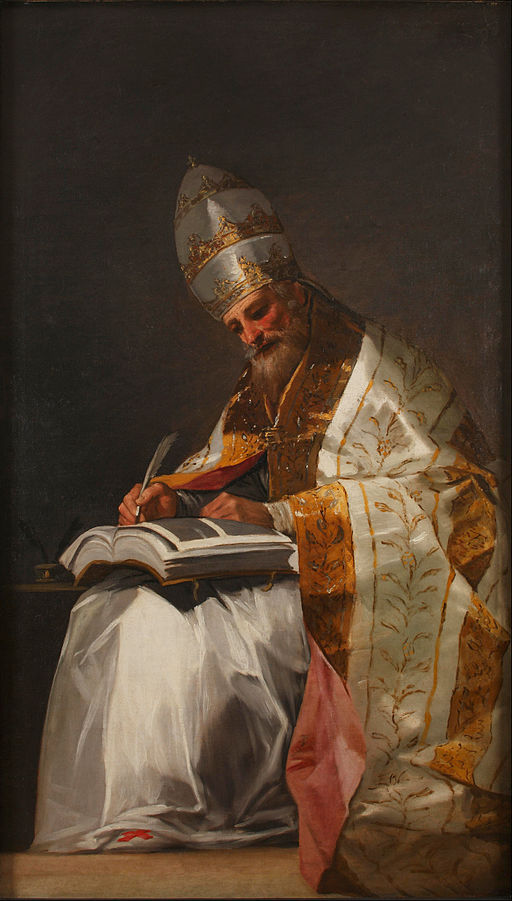
From a Protestant perspective, the period from AD 500 to 1500 marked a gradual but significant wandering of the Roman Catholic Church from the original teachings and practices of early Christianity. These shifts were organizational. They were theological. They were practical.
The Rise of the Papacy

In Lesson 1, we explored how the church quickly came to have bishops over cities and how these bishops grew in power. It was natural that the more prominent the city, the greater the power a bishop had. It is thus no surprise that the bishop of Rome quickly became the most powerful bishop in the world. It was not long until the bishop of Rome came to be known as the “first among equals.” The tradition that the church had been founded by Peter (cf. Matt. 16:18) gave Rome even greater status, although most scholars think the church rose organically from anonymous Christians who brought Christianity back there from their travels, perhaps even from the Day of Pentecost.
Alexandria, Antioch, and Jerusalem were also very important centers of Christianity, and their bishops wielded much greater power than the bishops of smaller cities in the Roman Empire. We have already seen in Lesson 2 how the cities of Antioch and Alexandria came to represent different schools of thinking in the 300s. Jerusalem retained a somewhat ceremonial role because of its historical importance for Christian faith.
In the year AD 330, the Roman Emperor Constantine made Constantinople a second capital of the Roman Empire, so it is no surprise that it quickly became the second most powerful city in the empire. Accordingly, after the Council of Constantinople in AD 381, the bishop of Constantinople became the second most powerful bishop in the church.
Under Leo I (440-461), the term “Pope,” meaning “Papa,” became more associated with the bishop of Rome than with the bishops of other cities. However, in this earlier time period the bishops of other prominent cities were sometimes also called “Popes.” In the 500s and 600s, the term came to be exclusively used only by the bishop of Rome.
The administrative and practical prowess of Gregory the Great, who was the bishop of Rome from 590-604, helped solidify the power of the bishop of Rome. As the saying goes, “The one with the plan is the one with the power.” He was able to take action during famine and plague, as well as during invasions and political turmoil. The church thus began to become more involved in politics under his leadership.
He also improved the organization of the church in his region, which increased the economic strength of the church. And money means power. He called himself “a servant of the servants,” meaning the one who served the rest of the church. But the effect of this service was to make the church dependent on him and thus to give him power over the rest of the church. If there is only one source of water for a town, that source may be serving the town, but that source also potentially has great power over the town.
Gregory was also a prolific writer and activator. He is often credited with reforming the “mass” or worship service involving communion. The music known as “Gregorian chant” gets its name from him. He was the first to write a book on “pastoral care,” instructing priests on how to minister to those under their care. He sent a missionary named Augustine (different from the theologian) to England in 597, a move that would soon shift the power of Christianity in Great Britain away from Celtic Christianity and toward Roman Christianity.
With the rise of Islam in the mid-600s, the cities of Alexandria, Antioch, and Jerusalem faded away as centers of Christianity. That left Rome and Constantinople as the centers of church power. Of the two Rome clearly remained the more powerful.
The Great Schism
The Patriarch of Constantinople was quite willing to live with a sense that the Bishop of Rome was the “first among equals.” However, an assertion of more absolute authority by the Pope came to a head in the year 1054. Rome added a Latin word to the Nicene Creed, filioque, which means “and the Son.” Whereas the creed had previously read that the Holy Spirit proceeds “from the Father,” it now read in the West, “who proceeds from the Father and the Son.”
The issue was more one of power than theology. The Patriarch of Constantinople indicated that the Pope and Roman church simply did not have the authority to add words to the creed on their own. By the time the smoke had cleared, the West had excommunicated the East and the East had excommunicated the West. (This excommunication was lifted in 1965 in a gesture of goodwill).
From this point on, we need to speak of the Roman Catholic Church rather than the Catholic Church, because the church universal was clearly divided. A number of “Orthodox” churches would rise in the East – Greek Orthodox, eventually Russian Orthodox, etc. This division also created a kind of monopoly that the Roman church had over European Christianity. This situation would allow for even greater deviations until the Protestant Reformation brought about reform.
It is about this time that it became required for priests to be celibate. Prior to the 1000s, celibacy was preferred but not required. Indeed, in the Orthodox church, a priest can be married today as long as he was married before he becomes a priest. We will talk about other beliefs and practices that arose in the late Middle Ages in the Roman church in the next Lesson.
The Crusades
In the Middle Ages, the lines between religious and political power were often blurred. In the late 1000s, the Muslim Turks were increasingly taking over the area where the seven churches of Revelation had been located, an area called Asia Minor. This was the area of Ephesus and Nicaea, which had been thoroughly Greek and was part of the Byzantine Empire, based in Constantinople (Istanbul today). In 1071, the Turks took over most of Asia Minor.
In 1095, the emperor of the Byzantine Empire sent out cries for help. This call for help led Pope Urban II to issue his own call for a Crusade to push back the Turks. The fact that a Pope could make such a call is a clear sign of how politically powerful the papacy had become. In that First Crusade, Jerusalem was liberated from Muslim control (1099). It was a situation that could hardly last forever, for Jerusalem was far removed from Christian-controlled areas. However, Jerusalem did remain in Christian hands for almost a century (1099-1187) until it fell to Saladin.
The counting can vary, but it is traditional to speak of eight Crusades, the last of which took place in the late 1200s. The later ones especially seemed to be more about political conquest than devotion to God. For example, the Fourth Crusade didn’t even make it to the Holy Land but turned and sacked the city of Constantinople, a Christian city. The so-called Children’s Crusade may have involved children marching toward the East to peacefully convert Muslims to Christ. They do not seem to have made it very far before death and slavery awaited, although it is hard to separate legend from history.
The Vatican Councils
In 1869, the Roman Catholic Church called a council that continued for over a year before it was interrupted by war. This council was called Vatican I. Perhaps the most significant outcome of this meeting was a sense of papal infallibility. The notion is that when the Pope speaks ex cathedra, or “from the chair,” his dictate cannot be wrong. It is no coincidence that language of biblical infallibility became more and more common among Protestants at about the same time.
Papal infallibility has only been invoked once since then, namely, in 1950 when Pope Pius XII invoked it in relation to the Assumption of Mary, her bodily ascension to heaven. Another statement made before Vatican I in 1854 is often considered retroactively infallible. It also concerned the Virgin Mary, making official the tradition that Mary was born without original sin, an idea known as the Immaculate Conception.
Vatican II, from 1962-1965 had a much different flavor from the first council a century earlier. Vatican 2 allowed the mass (communion, also known as the Eucharist) to be performed in the local languages of the people and allowed that there might be some non-Catholics who were “separated brothers and sisters” who could make it to heaven. Since Vatican II, the Roman Catholic Church has generally been much more conciliatory with the rest of Christianity, reconciling with both Orthodox and Lutheran churches.